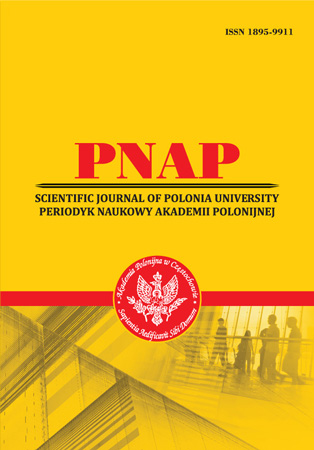REFERENTIAL PROPERTIES OF ENGLISH DETACHED NONFINITE CONSTRUCTIONS WITH AN EXPLICIT SUBJECT: OPERATIONALIZATION AND QUANTIFICATION
Abstract
This article presents the results of quantitative-corpus parameterization of reference properties of English detached nonfinite constructions with an explicit subject, carried out from the perspective of the cognitive-quantitative approach to language study. Through the prism of cognitive-constructive grammar, the syntactic patterns under scrutiny are recognized as grammatical constructions, i.e. complex semiotic units, non-compositional cognitively motivated pairings of form and conceptual meaning/ function, stored as holistic, conceptually connected, and interacting structures. Corpus-quantitative parameterization of referential properties of the given constructions presupposes the analysis of the linguistic means of expressing coreference between five micro-constructions and a corresponding matrix clause, reflected by the factors “Coreference” (COREF) and “Absence of coreference” (ØCOREF) of the parameter “Reference relations” (REFREL). Quantitative verification of the data involves a three-stage quantitative procedure incorporating 1) a multivariate analysis of variance (MANOVA), 2) a one-way analysis of variance (ANOVA), and 3) Tukey’s multiple comparison test performed with a computer statistical data analysis software R. The obtained results prove that the non-augmented constructions show a stronger semantic integration into a matrix clause, compensating lack of syntactic connection by closer reference relations, manifested by explicitly expressed full or partial coreference. The use of augmentors facilitates the identification of with-, without-, despite- and what_with- augmented constructions as syntactic patterns, thus balancing the absence of coreference and ensuring adequate cognitive processing of constructions.
References
British National Corpus (BNC-BYU) [corpus] – URL: http://corpus.byu.edu/bnc/
Chappell, H., McGregor W. (1996). Prologomena to a theory of inalienability. In H. Chappell & W. McGregor (Eds.), The Grammar of Inalienability. A Typological Perspective on Body Part Terms and the Part-Whole Relation. (pp. 3-30). Mouton de Gruyter.
Combettes, B. (2005). Les constructions détachées comme cadres de discours. Langue Française, 4, 31–44.
Croft, W. (2008). Construction Grammar. In D. Geeraerts & H. Cuyckens (Eds.), The Oxford Handbook of Cognitive Linguistics. (pp. 463-508). Oxford University Press. doi:10.1093/oxfordhb/9780199738632.001.0001
Croft, W., Cruse, D. A. (2004). Cognitive Linguistics. Cambridge University Press. https://doi.org/10.1017/CBO9780511803864
Fabricius-Hansen, C., Haug, D.T.T, Soebø, K. J. (2012). Closed adjuncts: degrees of pertinence. In C. Fabricius-Hansen & D. Haug (Eds.), Big Events, Small Clauses. The grammar of elaboration. (pp. 55–92). De Gruyter https://doi.org/10.1515/9783110285864
Goldberg, A. (1995). Constructions: A Construction Grammar Approach to Argument Structure. Chicago: University of Chicago Press.
Goldberg, A.E., (2019). Explain me this: Creativity, Competition, and the Partial Productivity of Constructions. Princeton University Press. https://doi.org/10.1515/9780691183954
Hoffmann, Th. (2017). Construction Grammars. In B. Dancygier (Ed.), The Cambridge Handbook of Cognitive Linguistics. Cambridge: Cambridge University Press. https://doi.org/10.1017/9781316339732
Janda, L. A. (2013). Cognitive linguistics: the quantitative turn. Berlin: De Gruyter Mouton. doi: 10.1515/9783110335255
Kortmann, B. (1991). Free adjuncts and absolutes in English: Problems of control and interpretation. London, New York : Routledge.
Martinčič, U. (2014). Encasting the Absolutes. English Language Overseas Perspectives and Enquiries, Vol. XI. 21-34. https://doi.org/10.4312/elope.11.2.21-35
Östman, J.-O., Fried, M. (2004). Historical and intellectual background of Construction Grammar. In M. Fried & J.-O. Östman (Eds.), Construction Grammar in Cross-Language Perspective. (pp. 1-10). Amsterdam, Philadelphia: John Benjamins Publishing Company. https://doi.org/10.1075/cal.2
Quirk, R., Greembaum, S., Leech. G., & Svartvik J. (1985). A Comprehensive Grammar of the English Language. New York: Longman.
R Core Team. (2017). R: A language and environment for statistical computing. R Foundation for Statistical Computing, Vienna, Austria. Retrieved from http://www.R-project.org/
Tronskiy, I.M. (2001). Istoricheskaya grammatika latinskogo yazyka. Obshcheindoyevropeyskoye yazykovoye sostoyaniye (voprosy rekonstruktsii). [Historical grammar of the Latin language. General Indo-European linguistic state (reconstruction issues)]. Moscow: Indrik. [in Russian]
Visser, F. Th. (1972). An Historical Syntax of the English Language. Part II (2) Syntactical Units with One Verb. Leiden: E.J. Brill.
Abstract views: 360 PDF Downloads: 295







